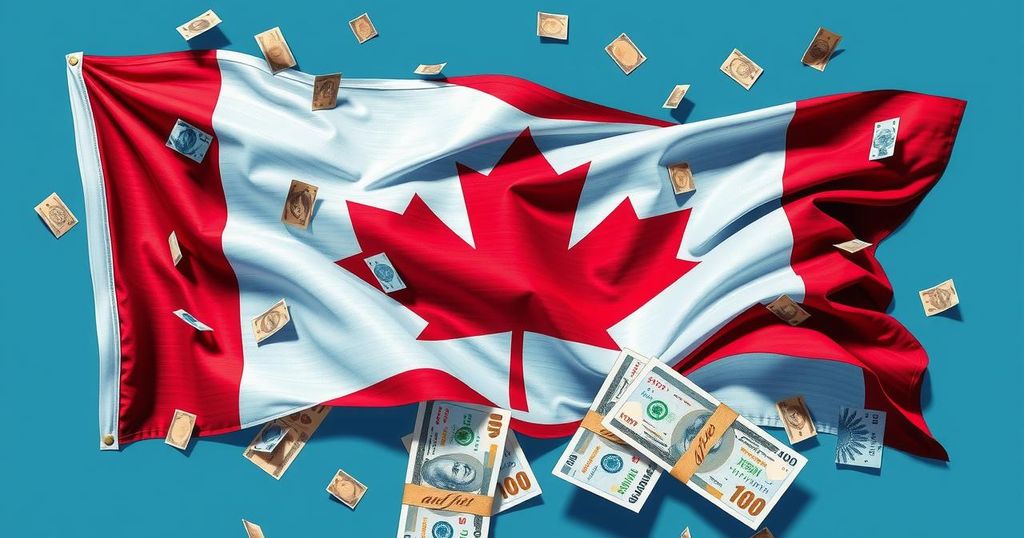Tariff War Impact: Canadian Dollar vs. Mexican Peso

The Canadian dollar has declined more than the Mexican peso since Trump’s inauguration, decreasing by 0.5% compared to a 3.5% gain for the peso. Analysts attribute this disparity to Canada’s greater vulnerability to tariff threats and less favorable negotiation leverage. Recent comments from various analysts highlight the comparative strengths of Mexico’s position and the anticipated tightening financial conditions for Canada.
The Canadian dollar is currently facing more significant depreciation compared to the Mexican peso amidst ongoing tariff disputes. Since Donald Trump’s inauguration, the loonie has declined by 0.5% against the U.S. dollar, while the peso has appreciated by 3.5%. Within a group of 16 major currencies, the Canadian dollar ranks nearly last in terms of total returns, trailing currencies like the Taiwanese dollar and South Korean won, with the peso positioned at eighth place.
Several factors contribute to the peso’s relatively favorable performance. Analysts suggest that the Canadian economy’s heightened exposure to tariff threats is a key reason. According to Nick Rees, head of macro research at Monex Europe Ltd., “Mexico is better able to offer concessions to the U.S., and that limits some of the downside that markets are willing to price,” making the Canadian dollar more vulnerable.
Mark Carney, who recently became the leader of the Liberal Party, has vowed that Canada’s retaliatory tariffs will remain in place until the country earns “respect” from President Trump. In contrast, Mexico’s President Claudia Sheinbaum has opted for a more restrained approach, emphasizing her negotiation capabilities regarding tariffs.
Additionally, U.S. Commerce Secretary Howard Lutnick has noted the measured responses of the UK and Mexico to tariffs while singling out Canada’s retaliatory measures as problematic. Analysts from JPMorgan Chase & Co. have observed smoother negotiations between the U.S. administration and Mexico compared to Canada’s communication difficulties.
Looking ahead, new details on tariffs are expected by April 2, including potential carve-outs for Mexico, particularly in the auto sector. Lower VAT rates at Mexico’s borders and the potential reduction of imports from China could create favorable conditions for Mexico amid these negotiations.
Derek Holt from the Bank of Nova Scotia highlighted that the peso previously underwent a significant revaluation due to domestic issues, making its depreciation more front-loaded compared to the Canadian dollar. Current conditions indicate that the loonie is weakening against the peso primarily due to Canada receiving harsher tariff threats from President Trump.
Sarah Ying of CIBC Capital Markets remarked that market sentiment suggests a likelihood of continued interest rate cuts by the Bank of Canada, driven by a decline in business and consumer sentiment due to tariff uncertainties.
In summary, the Canadian dollar is more vulnerable to tariff impacts than the Mexican peso, influenced by stronger negotiation capacities, market sentiments, and differing responses from both countries toward tariff confrontations.
In conclusion, the Canadian dollar’s weakness relative to the Mexican peso is driven by significant exposure to tariff threats and a less favorable negotiation position under the current U.S. administration. Analysts suggest that Mexico enjoys a better ability to negotiate concessions which buffer its currency against downturns. Recent developments and opinions from financial analysts indicate that both countries’ strategies in response to tariffs significantly shape their currencies’ performance, with predictions suggesting continued strains on the Canadian dollar in the future.
Original Source: financialpost.com







